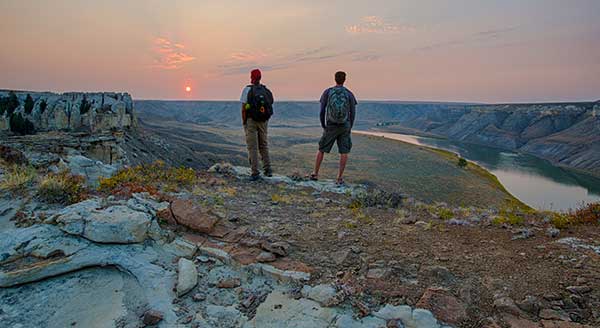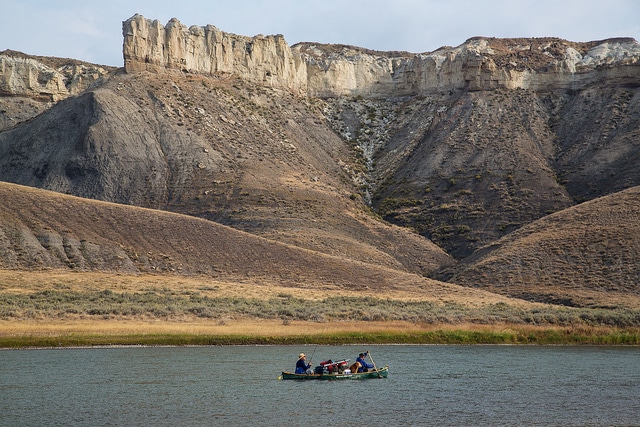
A survey of Montanans released today by the Montana Wildlife Federation showed strong support for protecting the Upper Missouri River Breaks National Monument and clear opposition to any attempts to reduce its size or change its management.
Last month, the Interior Department initiated a review of national monuments designated over the last 20 years to determine if monuments designated by previous presidents should be eliminated, reduced, or altered. The review includes the Upper Missouri River Breaks National Monument in central Montana.
- When asked about the Administration’s national monuments review, 59% of poll respondents said that they oppose eliminating the Upper Missouri River Breaks National Monument or reducing its size, with only 28% supporting such changes.
- Fully 49% of respondents strongly opposed reductions in the Upper Missouri River Breaks National Monument.
- Speaking about national monuments in general, 58% of respondents said that we should leave national monuments the way they are, with an additional 16% calling for more land to be protected through the designation rather than less.
“The Missouri Breaks include some of the richest wildlife habitat in the entire Great Plains, supporting trophy elk, deer, bighorn sheep and countless other species. This landscape has supported Montana’s hunting heritage for generations and created jobs in local communities,” said Dave Chadwick, Executive Director of the Montana Wildlife Federation.
“This survey confirms how much Montanans want to keep the Missouri Breaks the way it is now, so that future generations can continue to experience this important part of Montana’s natural history and cultural heritage,” he continued.
The Upper Missouri Breaks National Monument was designated in 2001 after two years of discussion by local communities, conservation advocates, ranchers, and other stakeholders. The monument protects 377,000 acres of public land under a management plan developed by Montanans to protect the Breaks’ natural resources, ensure public access, and maintain grazing and other traditional land uses.
“If the Department of Interior concludes its review and recommends reducing the size of the Upper Missouri River Breaks National Monument or eliminating it entirely, the federal government will be at odds with a majority of Montanans,” said Andrew Maxfield, the researcher who conducted the survey.
The poll follows the release of an analysis earlier this month by Headwaters Economics which showed that communities near national monuments experienced population growth and economic expansion after the designation.
“Hard data on key economic indicators show that the communities around the Missouri Breaks saw continued economic growth after the designation of the national monument,” said Chris Mehl, with Headwaters Economics. “This confirms what we’ve seen across the West: that national monuments are consistent with economic growth in adjacent local communities.”
The poll was conducted by Maxfield Strategic Communications Research, a national public opinion research firm. The results are based upon 702 random telephone interviews among likely 2018 voters in Montana. Sample was obtained from a list of active voters in Montana. Interviews were conducted by live interviewers reaching land lines and cell phones from May 21-25, 2017. This random sample of 702 has a worst-case 95% confidence interval of ±3.7% about any one reported percentage.
Share your voice, and speak up for the Missouri Breaks!
Results from a Survey on the Breaks National Monument_MSCR_MT_May 2017
Headwaters Economics Missouri Breaks NM Summary

